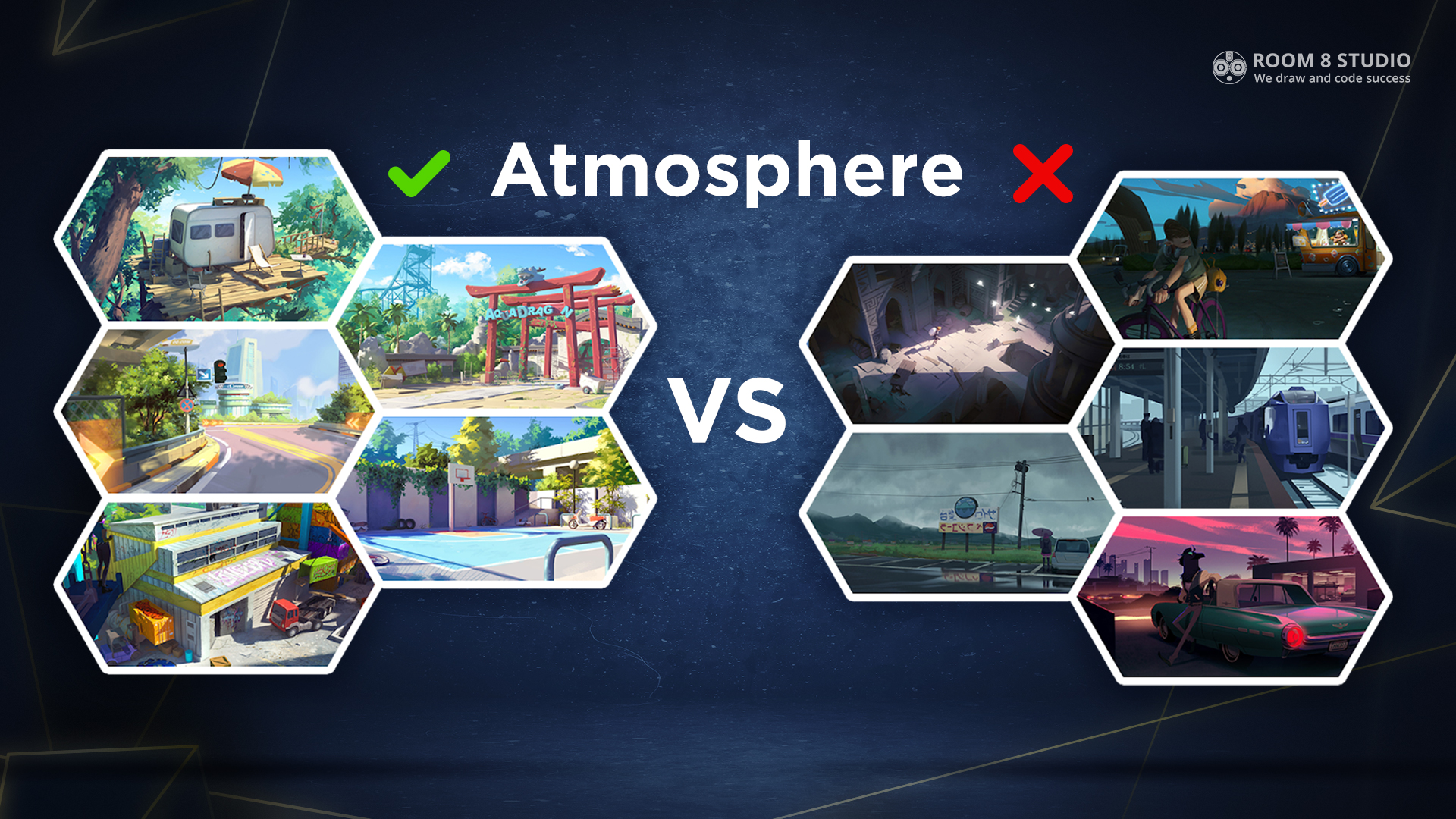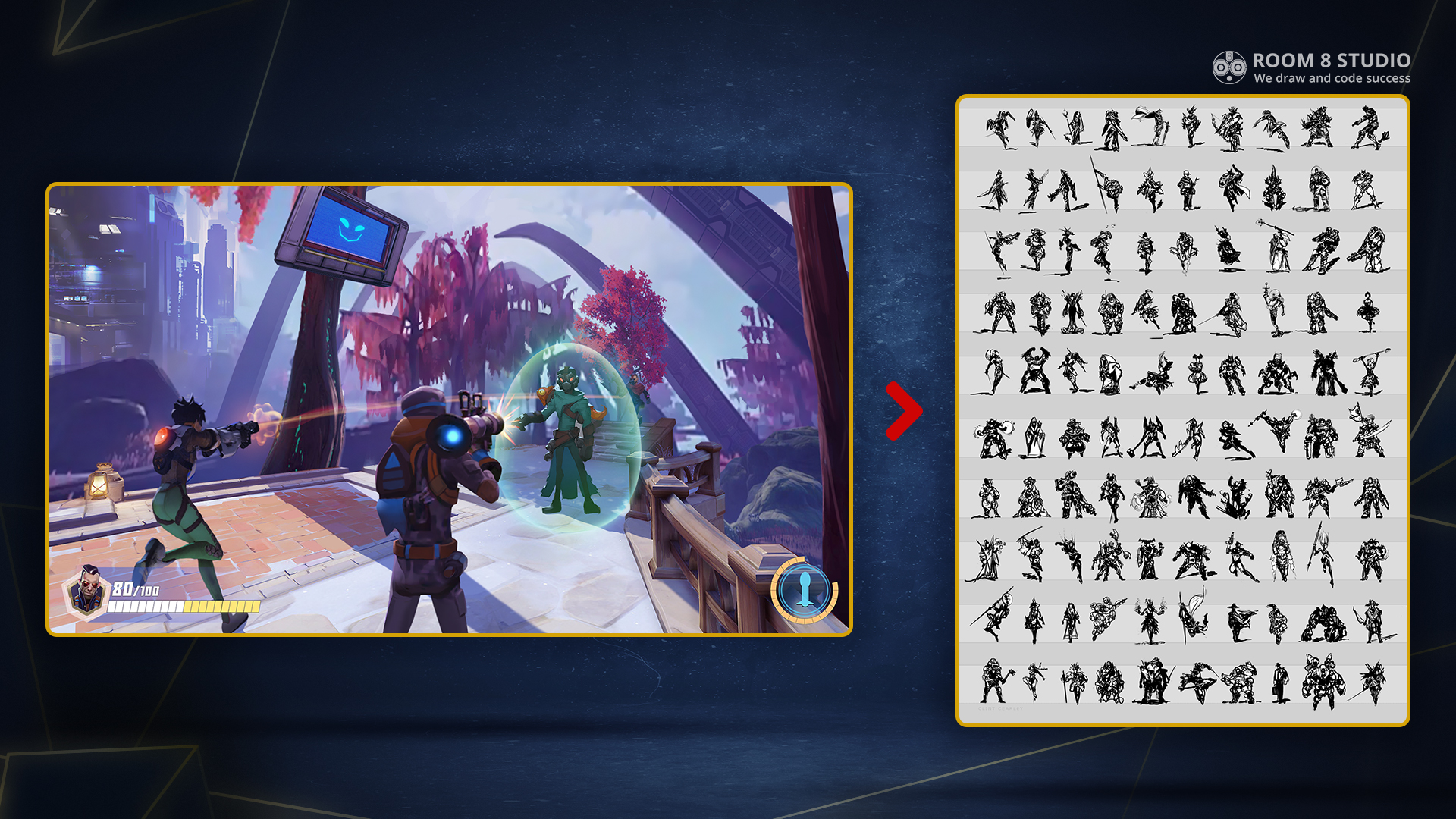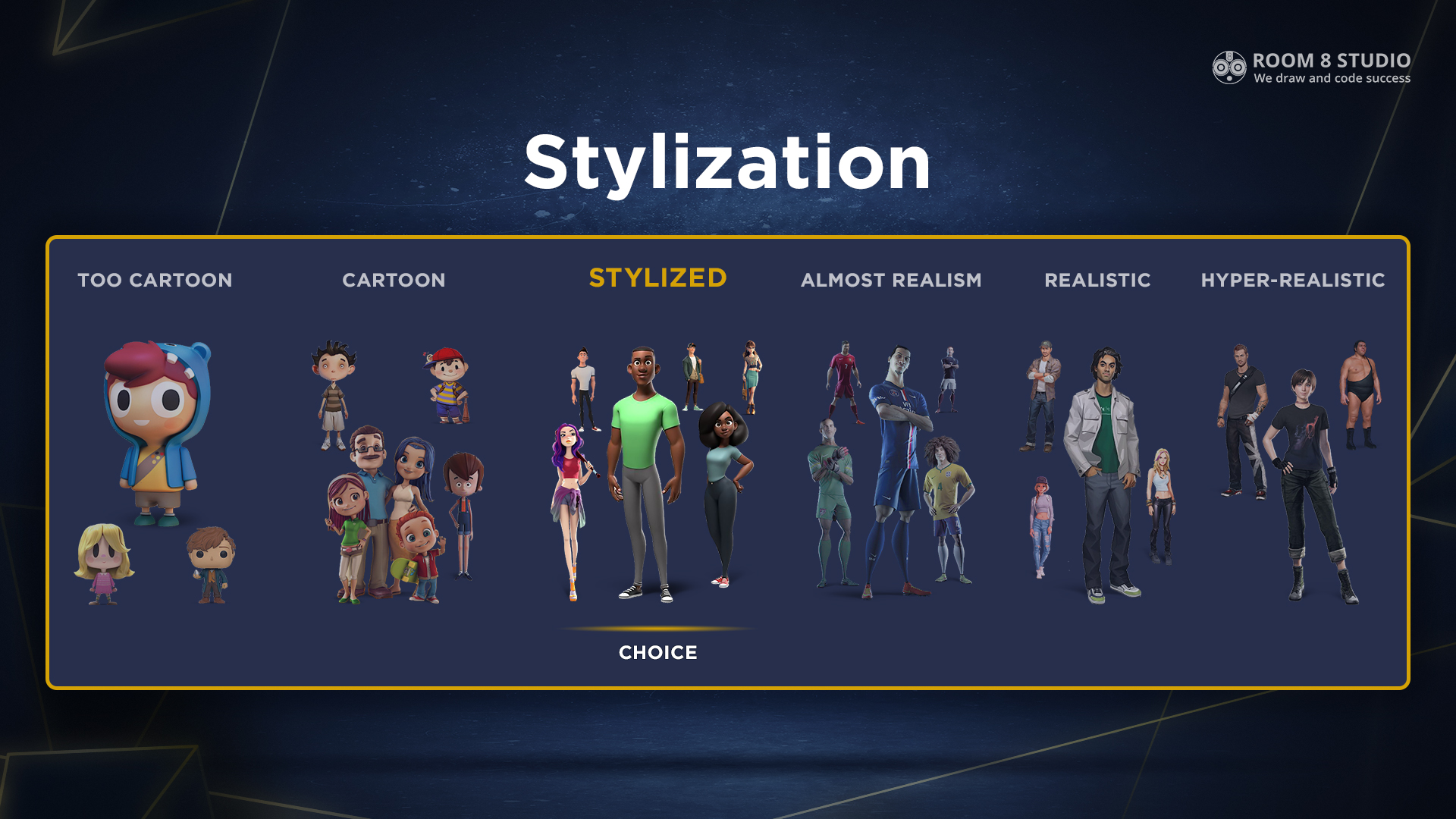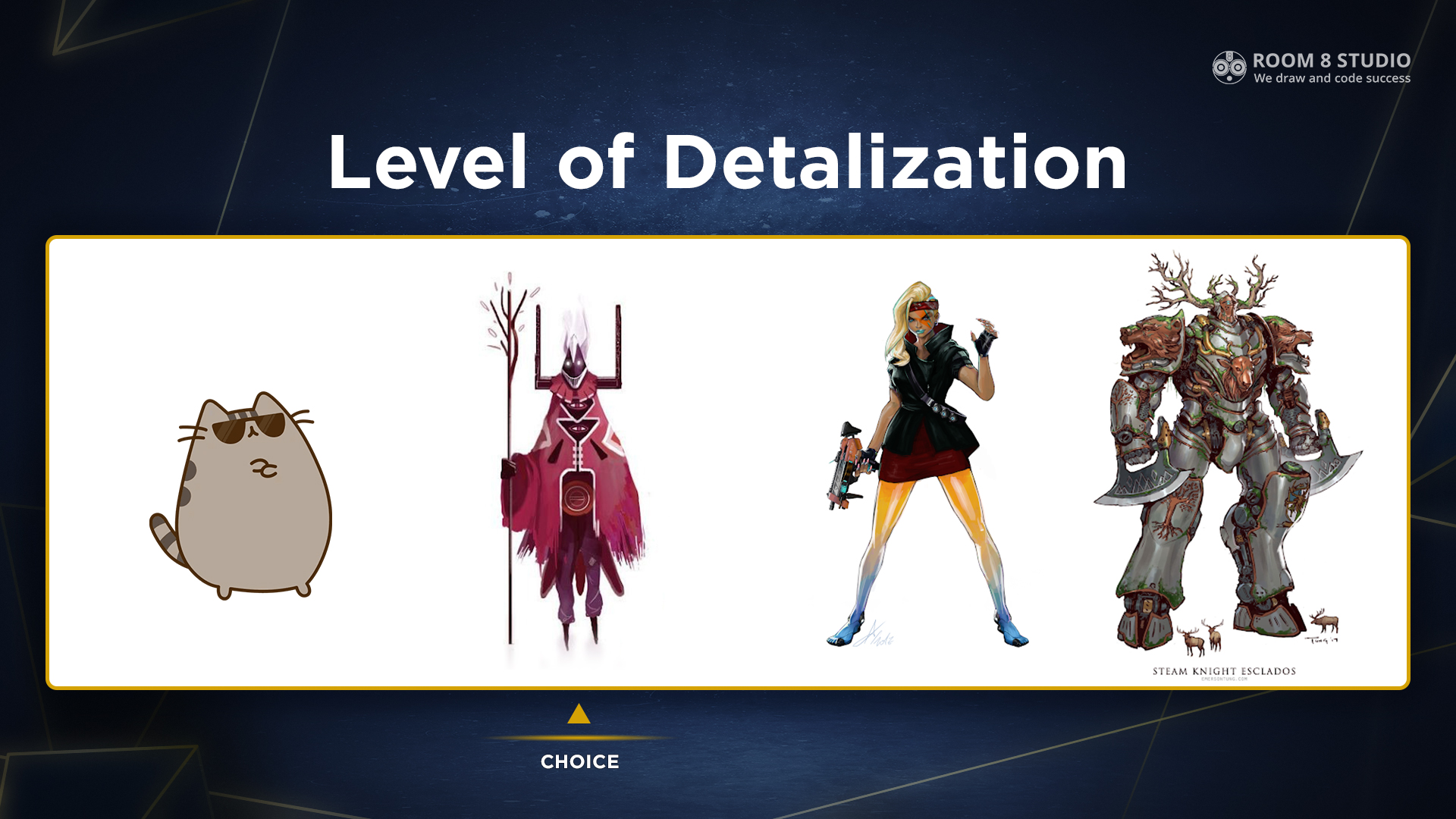Planning A Perfect Pitch: 9 Questions To An Art Producer
How many times were you unsure how to showcase your creative idea? In this article, Mikhail Moiseenko, Art Producer at Room 8 Studio, shares a guide through the world of pain and gain that will help you get your pitching deck right, impress the publisher, and plan & create a genuinely fantastic game art-wise.

Hi Mike! Please tell us a bit about yourself and your experience?
Hi! Now I’m an Art Producer and Art Team Supervisor at Room 8 Studio, where one of my responsibilities is preparing art direction and UI art direction pitches for our partners. Over the last two years, I’ve been involved in over 20 art direction projects. On May 27, I delivered a workshop at Digital Dragons conf called ‘How to Pitch And Not Drop Dead,’ where my co-presenters and I shared our experience in this. I was responsible for the art part, giving a small lecture on what should be in your pitch, why, and how it influences the game’s future. Then participants made their decks, getting feedback from us along the way.
Okay, let’s imagine I want to pitch my game. Where do I start, art-wise?
At first, you should be clear about art’s role in a pitch. A seemingly obvious but fundamental answer to this is that you need art in your pitch to show investors and partners how cool your project can look if you get enough money to make it.
And how to get there, to reach this level of ‘coolness’? How much art is enough?
The amount depends on your game’s size, but a few fake main gameplay screens are necessary. Suppose you have a working prototype or a demo video — perfect. These art assets should follow the creative pillars of your game and the game’s USP. While the art may not be perfectly polished yet, it must convey the atmosphere, general idea, and team skillset. To show the publisher your plans and some research you’ve done, you may want to include references in the presentation, but remember to mark them accordingly. Anyway, one great-looking fake screen would help pitch your game much better than tons of mediocre concepts. Pick the screen that the player will see the most. If we’re talking match three, it makes sense to draw a tile board, background, etc. Suppose it’s an FPS — environment and a weapon. And add UI to show the real picture — without it, it’s just a concept.

So, that’s it? One fake screen?
Well, no, of course, any art you use should be backed up with justification and analysis; why did you choose this style, for example, and why do you think it would work for your audience. It may even make sense to include alternative art directions to show you did research and what other art options you are thinking of. So, the pitch must contain an art direction part. It should answer such questions: how the game would feel, describe it with emotions like creepy/funny/etc.; what is the game’s style, meaning it’s realistic or abstract or else; how detailed the art would be, and why.

Should I include some estimates as well?
Sure: what will you make, who are on your team, what pipelines do you plan to use, and how much all of it will cost. These and a lot more questions you need to answer before making the presentation, and all these answers will be incredibly helpful during the pitch and a discussion after it.
Since you are pitching a game for specific types of players, it’s essential to show that you understand that target market and prepare the art that fits within that market. For the game design, the theme, and art direction, you should always do a target audience research so that everything works together. Use this in estimation as well; it helps to justify expenses.
What about your experience and clients? Does it make sense for a developer to involve an external team at this stage?
Since art accounts, I’d say, for the half of the pitch’s success, it is worth making it as eye-catching as possible. From this perspective, it seems reasonable to utilize the experience that may help you create art faster and better. Search for a provider that can give you what you lack: it may be pitch art direction if you don’t have an art director on board; it may be fake screens or a prototype if you don’t have enough artists or animators. Here at Room 8 Studio, we can help with all of the above and more, and we have over a decade of experience in hundreds of projects in all the genres possible.
And what do you need from a potential client to start work?
A game design concept. When you are pitching, you are pitching the idea of the game, so to make the right art for the game, we should understand it very well.
Sometimes clients don’t have a clear vision of what they want themselves at the moment, so it becomes our job to find answers to that and embody it in the game’s art. That can be challenging. Of course, any idea is a living thing; it evolves and mutates.

Are there any common questions you ask before creating art for the pitch?
Simple: genre, platforms, setting, and target audience. And main gameplay, meta gameplay, unique features, and USPs.
And the last… are there any common pitfalls when pitching, in terms of art, that one should be prepared for?
For starters, you should be prepared that the publisher might want some changes in the game’s look and feel. So it’s helpful to have an answer and proper justification for your every art decision, along with a few alternatives.
Second. After successful pitching, you will have to deliver the art of the same quality as you have shown in the pitch or better. Be sure to know how you will manage change requests, plan your time and who will be on your team. Include that on the pitch.
Third, research the publisher: what games they’ve already published? It’s best your game is in a similar genre. Show that you think of your target audience, of the player, and at this stage — it’s your publisher whose attention you need to capture. Analyze the genre’s popularity trends and competitors in different markets. Any ideas should be backed by data, especially in the elusive art sphere. And if you feel like you need any help — drop us a line!
Have a project in mind? Let’s talk!



